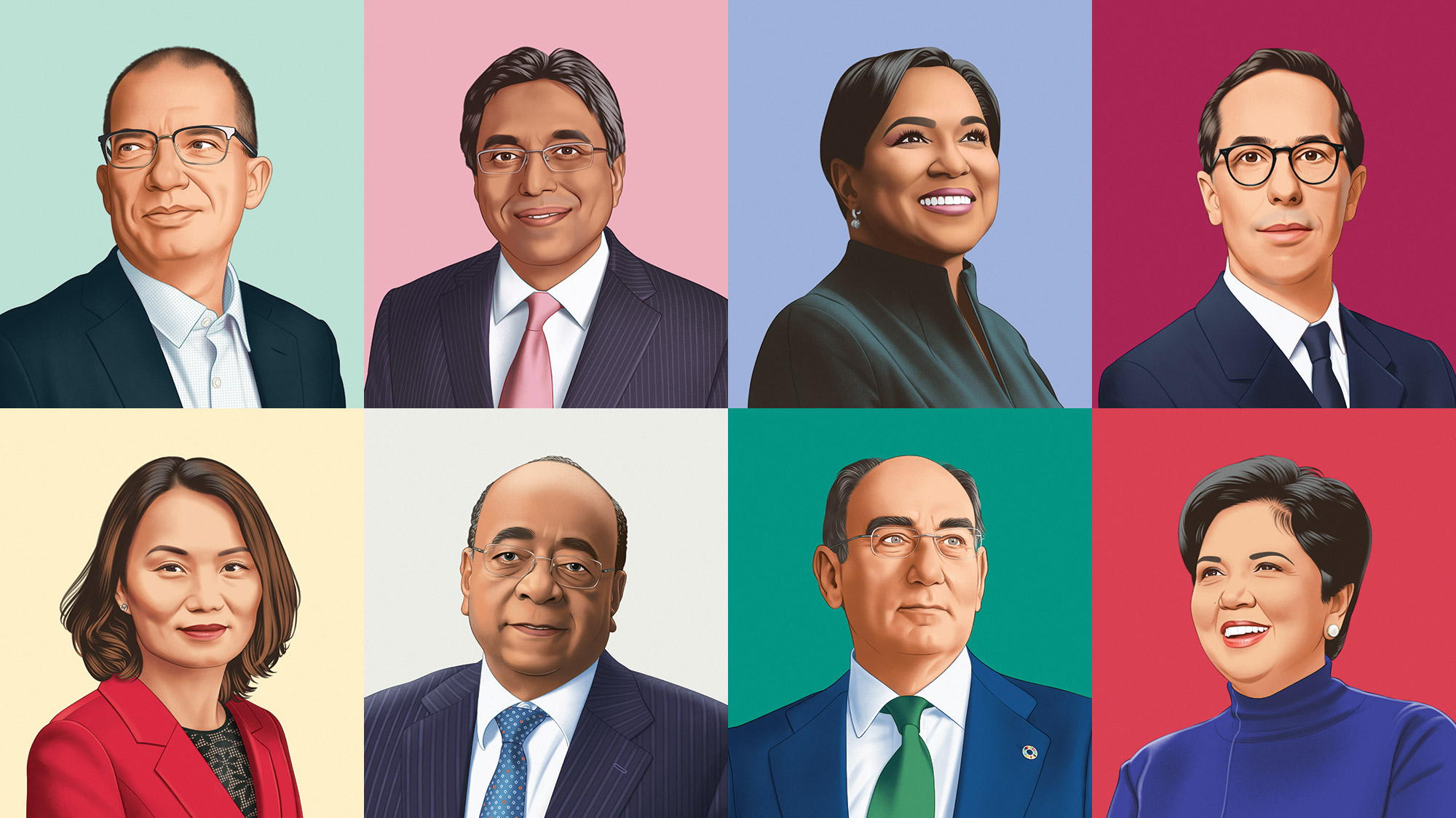Harvard Business Review published its first issue 100 years ago with a mission to help leaders put the world’s best management thinking into practice. To mark our centennial, we asked eight current and former CEOs from some of the world’s top companies to describe the ideas that have propelled their own careers and organizations. Two themes emerged: first, the need for constant innovation and out-of-the-box thinking as markets become more dynamic; second, the importance of purpose and a vision that encompasses all stakeholders. We look forward to many more decades of helping leaders build a better future for customers, employees, partners, and communities.
[ CEO / Moderna ]
Stéphane Bancel
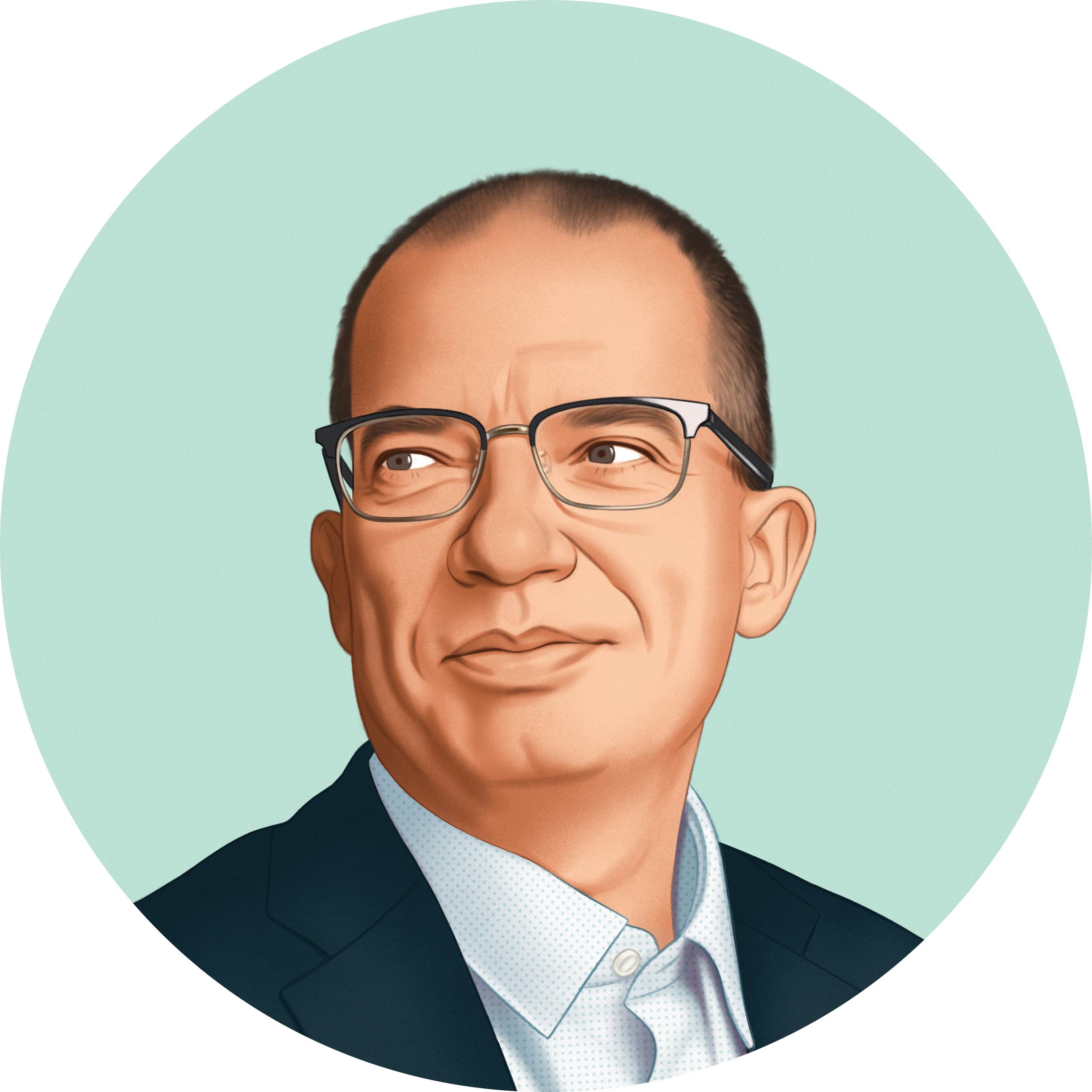
Planning from the Future Back
Most people think about the future of business from the present onward. As humans we have a natural inclination to think linearly. However, this approach limits our creativity and inhibits our ability to achieve what was previously unimaginable.
Consider a better alternative. By thinking five to 10 years out and then “playing the movie backward,” you free yourself from the constraints of what is possible now. You can envision year 10 and then figure out what has to happen in year nine, year eight, and so on for the vision to become reality.
I used this approach as the founding CEO of Moderna in 2011. As a start-up, we had no past to anchor to, so it was natural to think big about where the company wanted to be in the next decade and plan backward from there. We made sure that all our stakeholders were aligned on our vision and gave people time to engage intellectually and emotionally with the path toward our goals.
In the early years, this way of thinking allowed us to successfully build robotics for preclinical research. Our aim was to industrialize Moderna’s ability to make mRNAs, or messenger RNAs, which teach human cells how to make a protein that triggers an immune response. We started by thinking about how many mRNAs we would need to produce (thousands) and with what turnaround time to enable scientists to rapidly experiment and learn (three years). We then worked backward to understand what needed to happen when, without relying on past models or assumptions, and designed the robotic platforms to meet those goals.
More recently, this tactic helped us envision the delivery of an mRNA Covid-19 vaccine in less than a year. At the time, it was a crazy idea on an accelerated timeline, but once again we did it by thinking backward. We started with the vision of an approved vaccine and mapped backward—month by month in this case—from government authorization to completion of clinical trials to vaccine manufacture to sequence selection—an end-to-end process that typically takes years.
Reverse chronology can be a powerful management tool for any organization. It fosters the kind of unconstrained thinking that leads to big and disruptive ideas that propel business, industry, and society forward. This approach is not foolproof, of course. It can stall for any number of reasons, including failing to unite stakeholders around a clear vision and creating a plan that lacks sufficient detail. You can achieve unreasonable things only by aligning people, giving them time to engage, and creating a sound plan of action.
A future-focused mindset will continue to be an important driver of Moderna’s growth over the coming decades. We want to become the most impactful life-sciences company on the planet, and playing the movie backward will help us get there.
[ CEO / Mahindra ]
Anish Shah
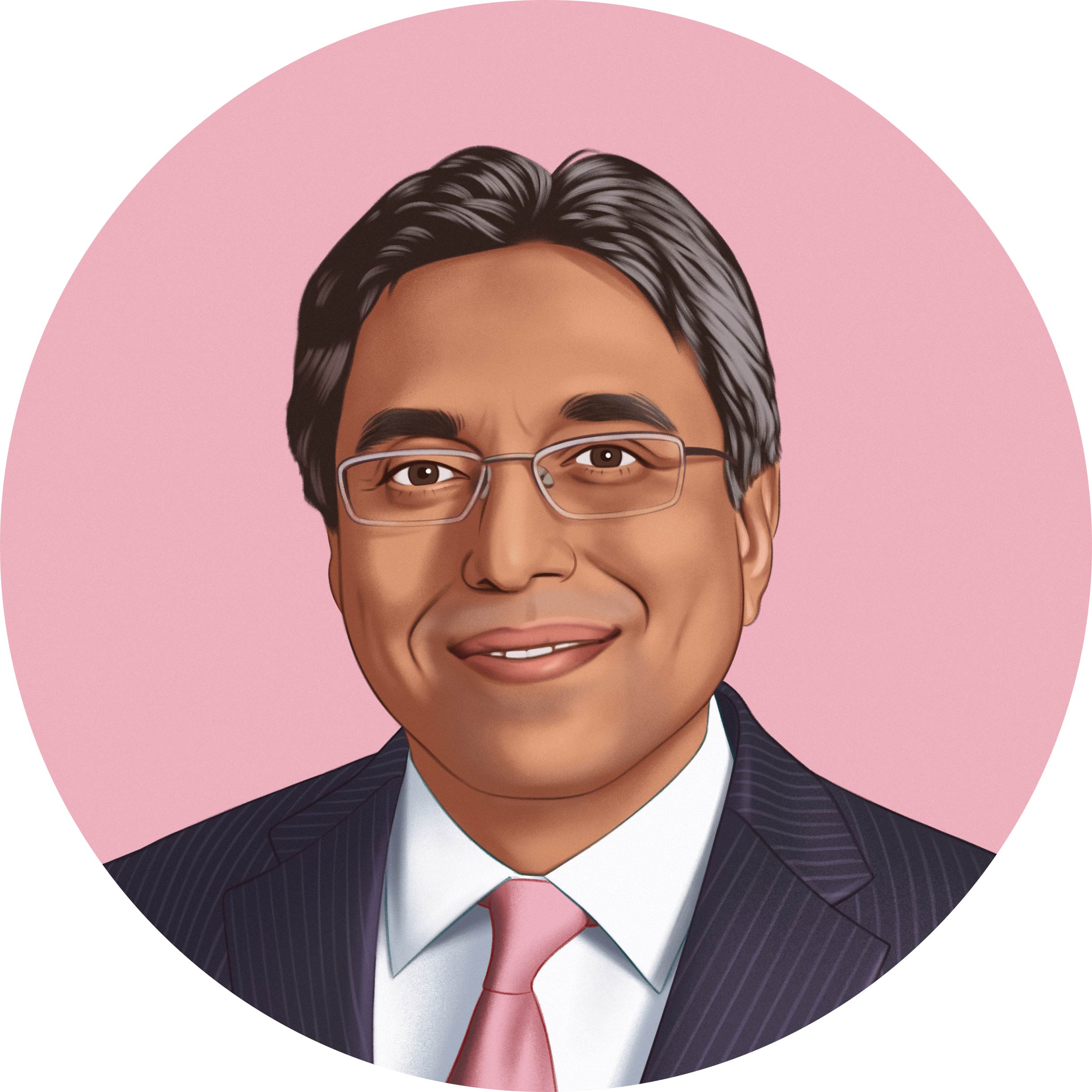
Purpose-Driven Strategy
On November 8, 1945, the Mahindra Group, then barely a month old, published an advertisement in India’s largest circulating English daily, The Times of India. It mentioned no product or service. Instead, it listed the fundamental principles with which the company would operate. It highlighted the role of the individual within the enterprise, and, printed as the Second World War was coming to an end and India’s independence movement was gaining steam, it emphasized the role of corporations in promoting a more cohesive society. It included a call to action—to “raise the standard of living of the masses”—and emphasized that “we must have the cooperation of those who will benefit the most—the general public.”
Today, we might call that advertisement a purpose statement. The principles laid out then still form the bedrock of the Mahindra Group’s purpose and the shorthand we now use for it: “Rise.” Our modern-day motto, refined over the decades, is “Driving positive change, enabling people to rise.” It is the reason I joined the organization, and it is the reason I have stayed.
I can only marvel at the prescience of Mahindra’s first leaders for their early commitment to guiding principles that emphasized not just business success but also the greater good. By 1962, Peter Drucker was also writing about “Big Business and the National Purpose” in these pages, calling for more corporate “social responsibility.” He asserted that a large company is not “a ‘private affair’ and the concern of only its stockholders, executives, and employees”; rather, it is “a community asset and ‘public’ in its conduct, in its mores, and in its impacts.” Further thinking on ethics in management, moving beyond strategy to purpose, corporate vision, what a business is for, and shared value followed from a host of management luminaries, including Jim Collins, Charles Handy, and Michael Porter.
All the while, Mahindra held fast to its purpose, and we’ve found that those founding principles have stood the test of time and guided us through unprecedented socioeconomic shifts. They have helped us excel at a range of businesses from automotive to farming to finance to travel, embrace cutting-edge technology, and spearhead a move toward improved environmental and ethical standards. For example, we started developing and investing in decarbonization well before the emergence of ESG funds and socially responsible investing. Adherence to our founding principles has allowed Mahindra Group not only to keep up with the times but to forge ahead of them.
There’s another line in that advertisement that I want to highlight: “Neither colour, nor creed, nor caste should stand in the way of harmonious working.” Even in the 1940s, those at Mahindra knew that for the organization to succeed and serve society, it would need to prioritize diversity and inclusion. We live in an unequal world that divides us from one another. Purpose-led businesses have the potential to create a more equal world. Only when we enable others to rise will we rise.
[ CEO / Walgreens Boots Alliance ]
Roz Brewer
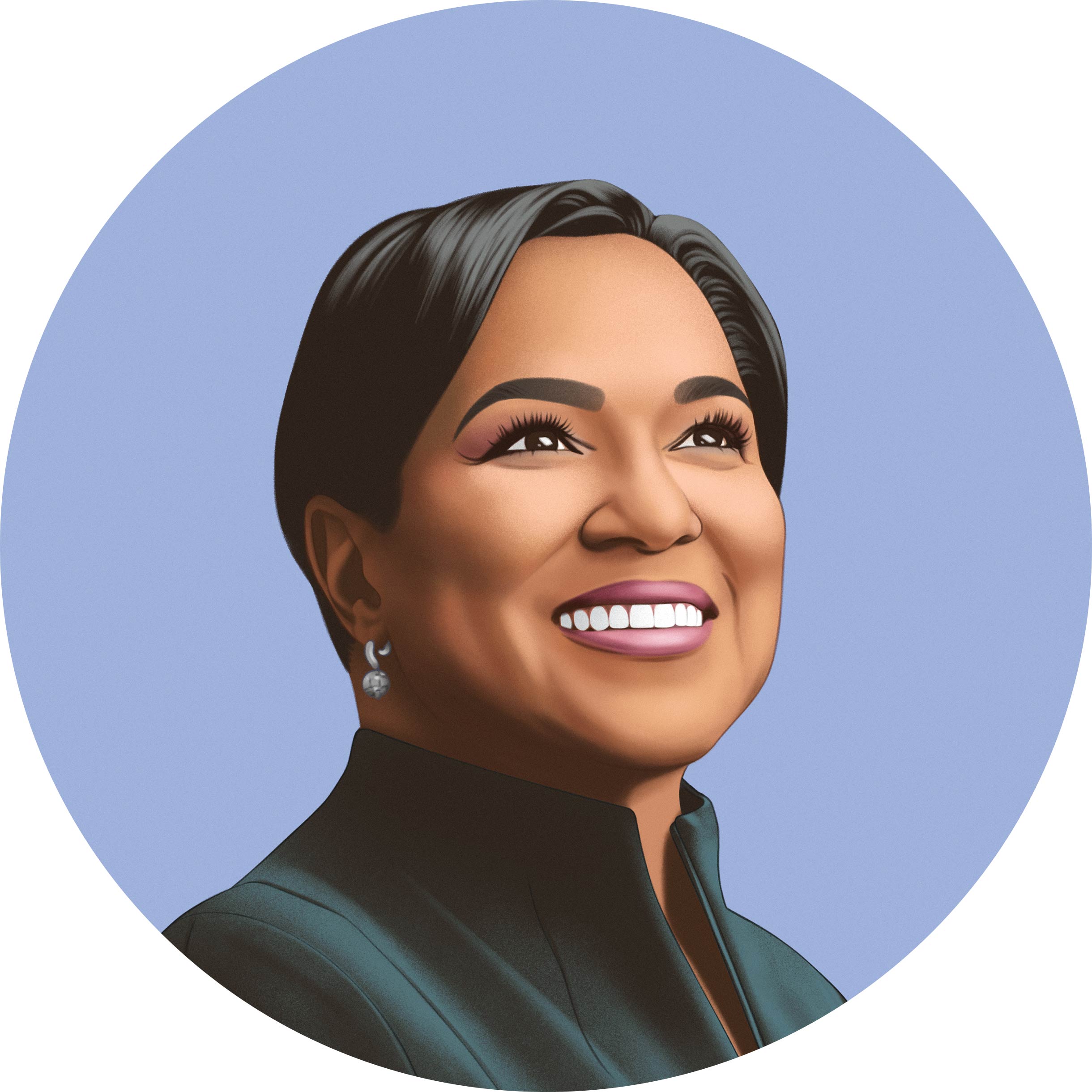
Listening as a Leader
Listening is fundamental to good leadership and management; however, to be effective, it must be practiced with great intention.
Over the years, I have learned that active listening helps to identify problems to solve, possibilities for innovation, necessary process or policy changes, new product ideas, ways to improve customer service, and more.
As CEO of Walgreens Boots Alliance, and in prior retail leadership positions, I have always visited stores, looking for ways to make them better. I learn from our customers and our team members.
In 2022, there are so many ways to track consumer opinions—including through digital apps—but I think it’s still best to see and hear feedback live and in person. When I engage with the frontline team, the wheels really begin to turn.
As I introduce myself on store tours, I make it clear that I’m visiting to listen—not to play “Monday morning quarterback” or a game of “gotcha.” I want to engage my team members in a discussion and hear what they have to say. I want everyone to know that they have my full attention, so I do not bring any mobile devices with me. We talk about problems openly and then quickly create corrective action plans.
Even after I’ve looked at data to understand an issue and worked with my team to come up with a recommended resolution, I meet with store managers to put the proposal in front of them. I ask, “Do we have this right? Endorse it or tear it apart, but tell me how this stacks up with your experience in the store. I am listening.”
I encourage my leadership team to visit stores too. Sometimes they come back and share, citing an outdated policy or process and saying, “I can’t believe we did that. Did we really think that was a good idea?” Usually it’s a decision we’d made having no idea it would hamper customer experience. Then we discuss the problem, unravel it, and fix it as a group.
After a store visit, I often send a note to the team members I met with. I thank them for sharing their perspectives and explain exactly how and when we’re going to make changes as a result. Then, when they see the change come across the wire, they know their voices matter and that frontline innovation and problem-solving are deeply valued.
As management scholars have written in HBR for at least a decade, leadership is a conversation. Active listening can be one of your most powerful tools.
[ CEO / L’Oréal ]
Nicolas Hieronimus
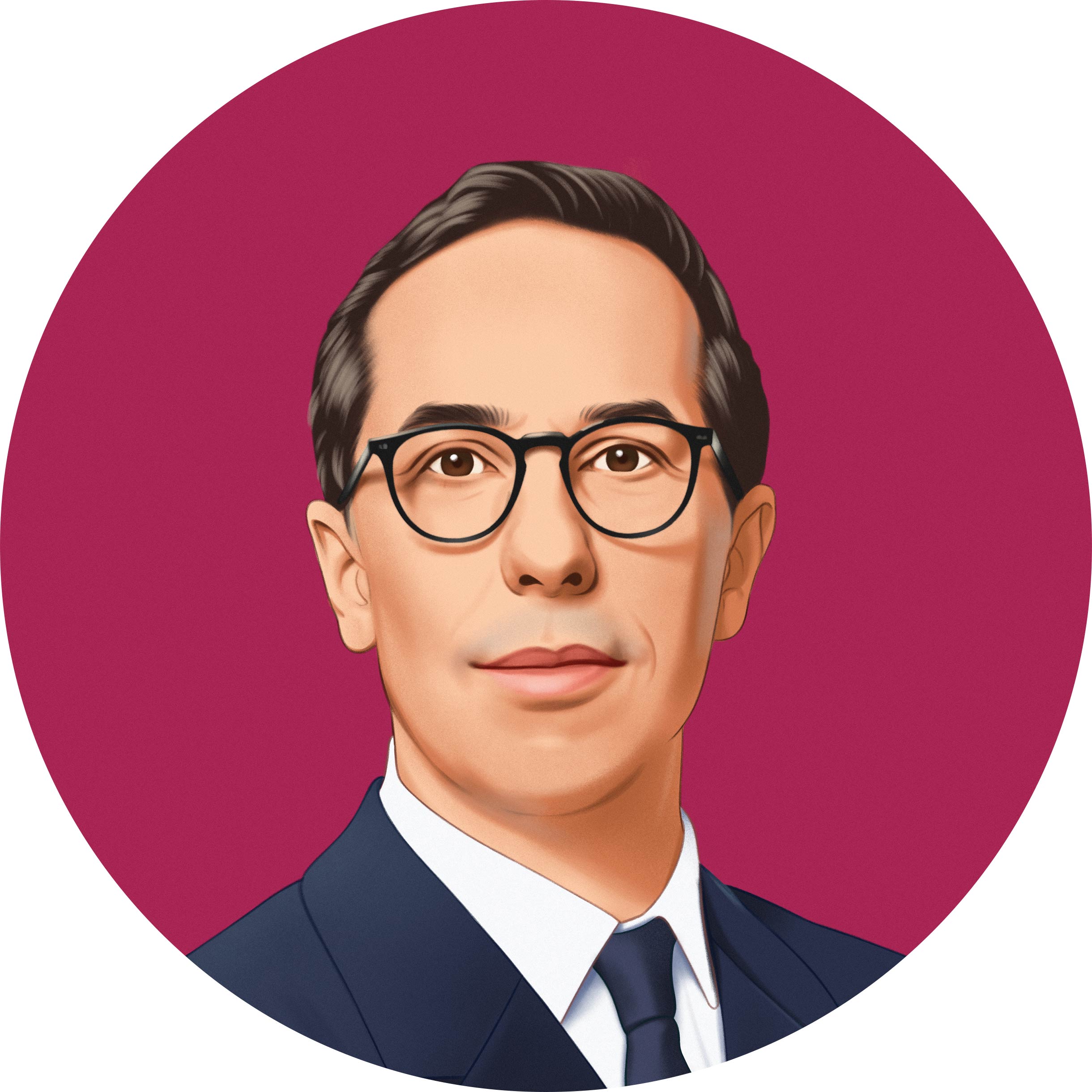
Global Vision with Local Execution
One of the biggest challenges facing any multinational company is how to stay locally relevant while still driving economies of scale and maximizing global reach. In a 1983 article in HBR, Harvard Business School marketing professor Theodore Levitt argued for globally standardized products. His contemporary, the sociologist Roland Robertson, posited in HBR and elsewhere that the solution was instead “glocalization”—that is, tailoring global products, services, and business practices to local laws, customs, and preferences.
At L’Oréal, we have tackled this dilemma with an approach we call universalization: a centrally led strategy brought to life through local execution. Concretely, this means that our teams in individual markets have a high degree of autonomy but operate under a clear, globally aligned frame. To support this, we have a worldwide network of manufacturing sites, research and innovation centers, and marketing design hubs to develop, make, and distribute products in various geographies.
Founded in Paris in 1909, L’Oréal now has a total of 85,400 people working in 68 countries and a presence in more than 150 markets. We’ve been able to create a flotilla of truly global brands, from Maybelline to Lancôme to Kérastase, while offering tailor-made products to meet the beauty aspirations of consumers in every part of the world.
For example, L’Oréal Paris, the world’s largest beauty brand, offers a full range of highly advanced products in five categories: makeup, skin care, hair care, hair color, and male grooming. At the same time, our teams on the ground allow us to quickly identify emerging trends and issues in local markets, such as consumers’ concerns about dark spots in Southeast Asia and Latin America or the exponential rise of independent hairstylists in North America. They also help us spot promising opportunities to support local initiatives. Our Active Cosmetics Division teams work hard to strengthen partnerships with health professionals and health influencers in various geographies.
Our approach spurs local innovation, which we can then roll out to other areas of the world. This was the case with the Garnier Bright Complete range of products, including the popular Vitamin C serum, which was originally designed for consumers in Southeast Asia and is now a hit in Mexico, France, and many other countries.
The balanced partnership we have between global and local teams encourages and rewards entrepreneurship, because anyone, anywhere, can make a real difference. During my career, I have been lucky enough to work at our subsidiaries in Mexico and the United Kingdom and see firsthand how a bottom-up idea can have companywide impact and how adapting top-down ideas, resources, and guidance can provide an extra local edge.
Universalization also underpins our large transformation projects, pairing global vision with local implementation. Take our sustainability program, “L’Oréal for the Future.” While we are working toward the same goal of protecting the beauty of the planet in all our markets, the specific actions taken may vary according to local context, regulations, and expectations. Through our impact investing funds, L’Oréal supports the regeneration of degraded ecosystems and rebuilding of biodiversity, including local initiatives to restore mangroves in Kenya, revitalize 50,000 hectares of land in the United Kingdom, and facilitate low-carbon agriculture in France.
The trust and tight partnerships between our global and local teams also guide us in crisis situations. For example, during the recent pandemic, we relied on our teams on the ground to identify global supply-chain disruptions and rapidly changing market conditions and worked together to navigate them. Just one example: Globally produced guidelines and materials enabled our teams in individual markets to work with their own authorities to put in place the enhanced sanitation protocols needed to ensure the safe reopening of salons.
As the world becomes ever more volatile, uncertain, chaotic, and ambiguous (VUCA), not to mention fragmented, I remain convinced that our approach will give us the adaptability we need to continue to succeed. Whether you call it glocalization or universalization, it can benefit any organization that strives to serve many markets.
[ CEO / Yum China ]
Joey Wat
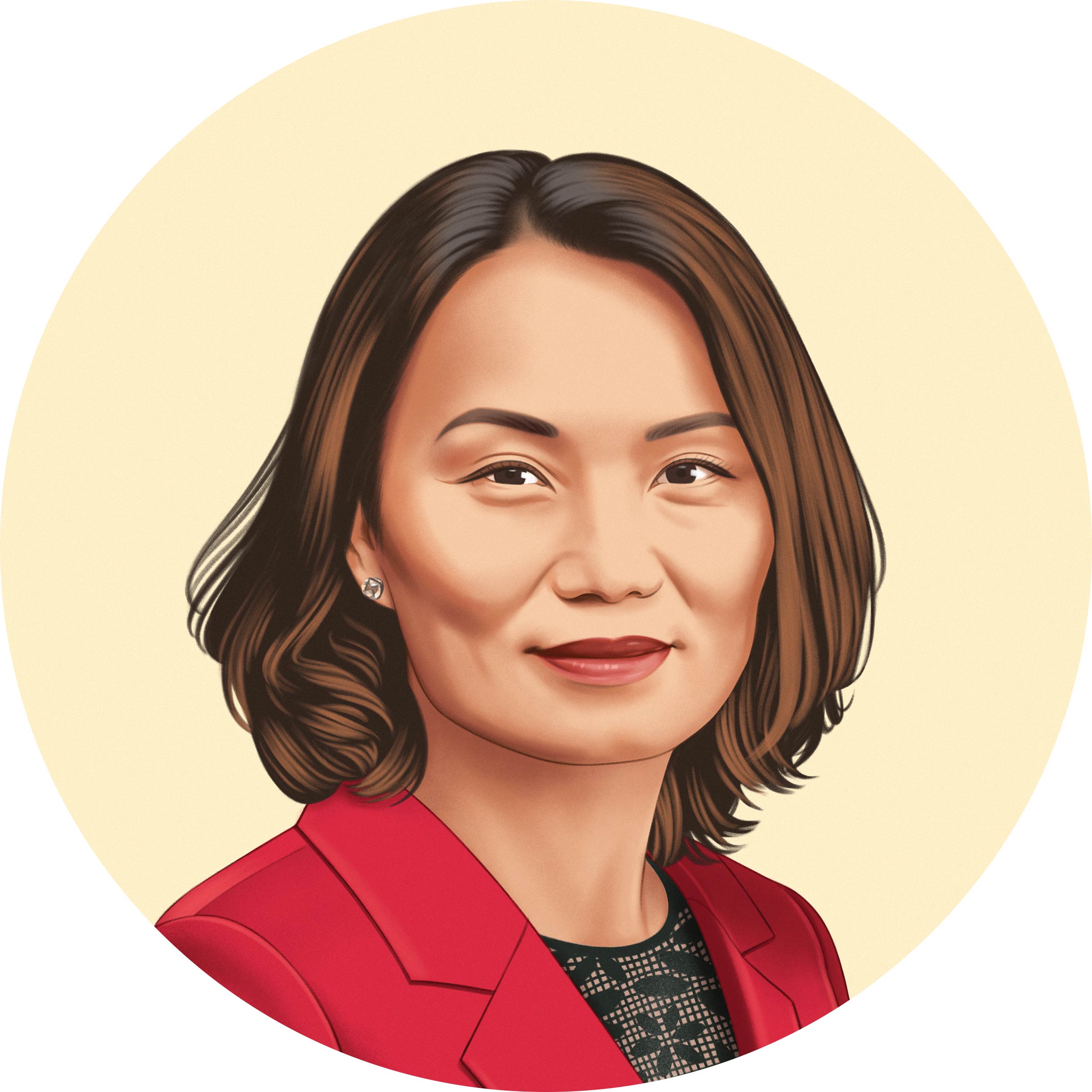
Continuous Innovation
As I have moved from one job to another in my career, culminating in my current role as CEO of China’s largest restaurant company, innovation has emerged as perhaps the most important part of my leadership philosophy.
Customer preferences are constantly evolving, while new technologies transform the way we interact. I have always believed that the companies that survive and prosper in dynamic, competitive markets are not necessarily the strongest or the smartest; they’re the ones that can respond quickly and adapt effectively to changing circumstances. That requires empathy for those we’re serving, resilience, and creativity—lessons that I learned during my relatively humble upbringing and that I’ve tried to provide to the teams I manage.
In times of comfort, many companies stop innovating because they lack a sense of urgency, and as the late HBS professor Clayton Christensen demonstrated, in doing so they open themselves to disruption. In times of crisis, innovation is even more important, as the pandemic showed us. In my industry, the firms that quickly adopted new health and safety measures for employees to keep their restaurants open and designed new solutions like contactless ordering and pickup were the ones that came out stronger.
To drive organizational growth in good times and in bad, you need to build an innovative culture. At Yum China, our vision is to be an innovation pioneer in the restaurant industry, from the way our supply chain operates to how our food is flavored and prepared to the ordering and dining experience we offer our customers. By following this vision, we have been able to expand by more than a thousand stores a year while maintaining healthy payback periods. New formats for our restaurants help us cater to different business needs, like delivery and takeaway services, as well as extend our presence into lower-tier cities. We launch, on average, more than 500 new or upgraded—and often localized—products across our brands each year, helping us diversify into adjacent categories to drive additional growth. Suggestions for new menu items or service improvements routinely come from our frontline team members, who understand that as an organization, we want to grow rapidly, work in a more agile way, and create more value for customers. At Yum China, reasonable risk-taking is accepted, and employees are encouraged to think outside the box. Our Shanghai Innovation Center is where we experiment with and perfect both bottom-up and top-down ideas: From our business model to digitalization to the quality of our French fries, every area of our operation can always be improved.
Another key part of our innovation culture is making sure that our decision-making is fast, while still of high quality. We have worked hard to reduce the layers of bureaucracy that can slow the process and the speed at which we respond to changing customer preferences. We also focus on technology, upgrading our systems and introducing new tools like smart watches that enable our restaurants’ general managers to track operation metrics in real time. Innovation is the lifeblood of our business—as it is or should be for every organization trying to be successful today.
Yum China has been operating for 35 years and has grown with new generations of customers. That is thanks to a relentless focus on continuous innovation. In the future, we will keep exploring new ways to enhance customer and employee experience, deliver value, and drive growth. Successful companies never rest on their laurels.
[ Former CEO / Celtel ]
Mo Ibrahim
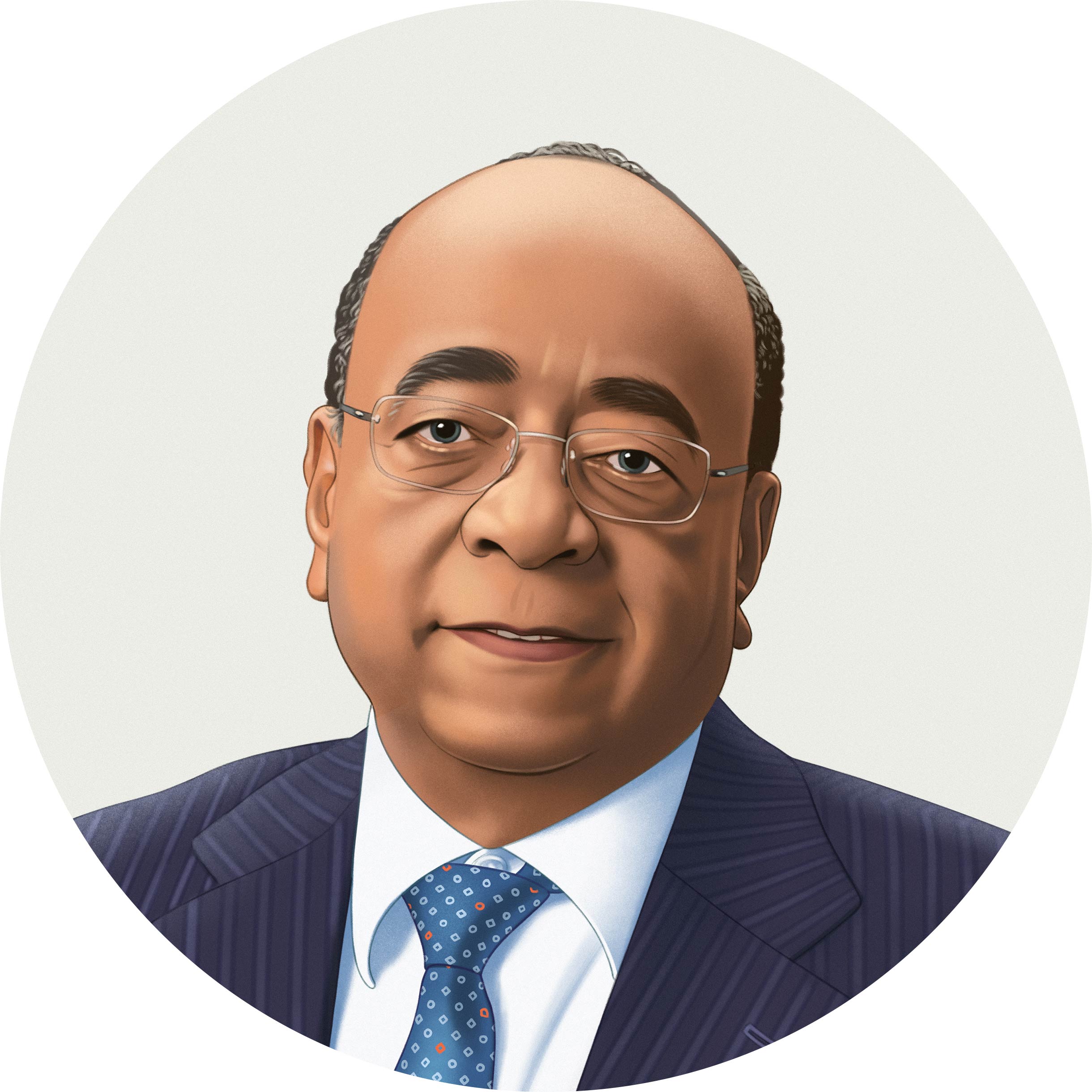
Inclusive Capitalism
I was born in Sudan to Sudanese parents, and although I’ve lived in Britain since my university days, I hold fast to many aspects of African culture. One key principle I learned from my ancestors is the importance of caring for one’s neighbors. In my business ventures, that commitment has translated to what I call inclusive capitalism. (Others might use the term stakeholder capitalism.) As an entrepreneur and a CEO, my aim is to ensure that everyone who helps me achieve success—employees, investors, customers, members of the community—shares in the rewards.
In 1989, I founded MSI, a consultancy that advised telecommunications companies on software and network design, with $50,000 of my own money. When we sold it 11 years later for $900 million, I was proud that 33% of the company was held by our employees. At that time, there wasn’t a culture of employee share ownership in the UK. But every December, I offered equity to our people at well-below-market prices. (One year, the employee price was 16 pence a share even though an investor had just offered to pay £15 a share!) As the sole owner, I could make decisions like that, and I did so without hesitation. It was fair and just for our people to participate in our collective value creation. And at a time when technical talent was in high demand, it was a fantastic acquisition and retention strategy. MSI had some of the best engineers in the world, and together we designed half the mobile networks in Europe along with several in Asia. I often told the group, “It’s thanks to you that we landed this contract and execute on it. If the company is making money, let us all make money.”
My next venture was the one I’m best known for: Celtel, which brought mobile phone service to Africa. From the start, in 1998, I knew it would be a winning proposition. With a huge geographic spread and barely any landline service, the continent was in dire need of a telecommunications network. By building one, we would help millions of Africans stay in touch with loved ones and better manage their own lives and businesses—and we could earn good revenues and profits doing it. However, neither industry players nor banks wanted to bet on a tech company in Africa.
This time around, I couldn’t finance the project alone: We wanted to build networks in dozens of countries, which is extremely expensive. So I secured funding from various investors—seven rounds in six years. Those shareholders became key partners: Any institution holding a stake of more than 2% got a seat on our board, and we all committed to the highest governance standards. Celtel’s operating companies—we eventually had about a dozen, one for each country in which we launched—would pay no bribes. To keep everyone honest, any expense over $30,000 had to be approved unanimously by the directors, and since our business was growing extremely rapidly—100% year over year—that meant being on call to give approvals virtually 24/7. We also refused to play the tax avoidance game that remains common in Africa and thus became the largest taxpayer in nine countries, happily funding roads, schools, and other critical infrastructure and services.
With equity spread among many investors, I couldn’t give discounted shares to employees, as I had at MSI, but our board committed to full insurance and health care benefits for them and their families—an important step as AIDS ran rampant—and awarded significant stock options. By the time we sold the company in 2006 for $3.4 billion, 13% of the shares were in workers’ hands. To paraphrase Harvard Business School professor Felda Hardymon, a former Celtel board member, you never lose by giving employees a stake in the business.
At both MSI and Celtel, we focused on providing a service that customers needed and that would enhance communities from Spain to Singapore to my native Sudan. We rewarded our employees handsomely and earned deep loyalty as a result. And we partnered with our managers and shareholders to deliver impressive financial results and make a positive impact on people within and outside our firm. That approach wasn’t yet fashionable. But it was the right thing to do.
Today, I lead the Mo Ibrahim Foundation, which focuses on expanding good governance and principled leadership in Africa. My hope is that more companies on the continent—and around the world—will embrace the principles of inclusive capitalism.
[ Executive Chairman / Iberdrola ]
Ignacio Galán
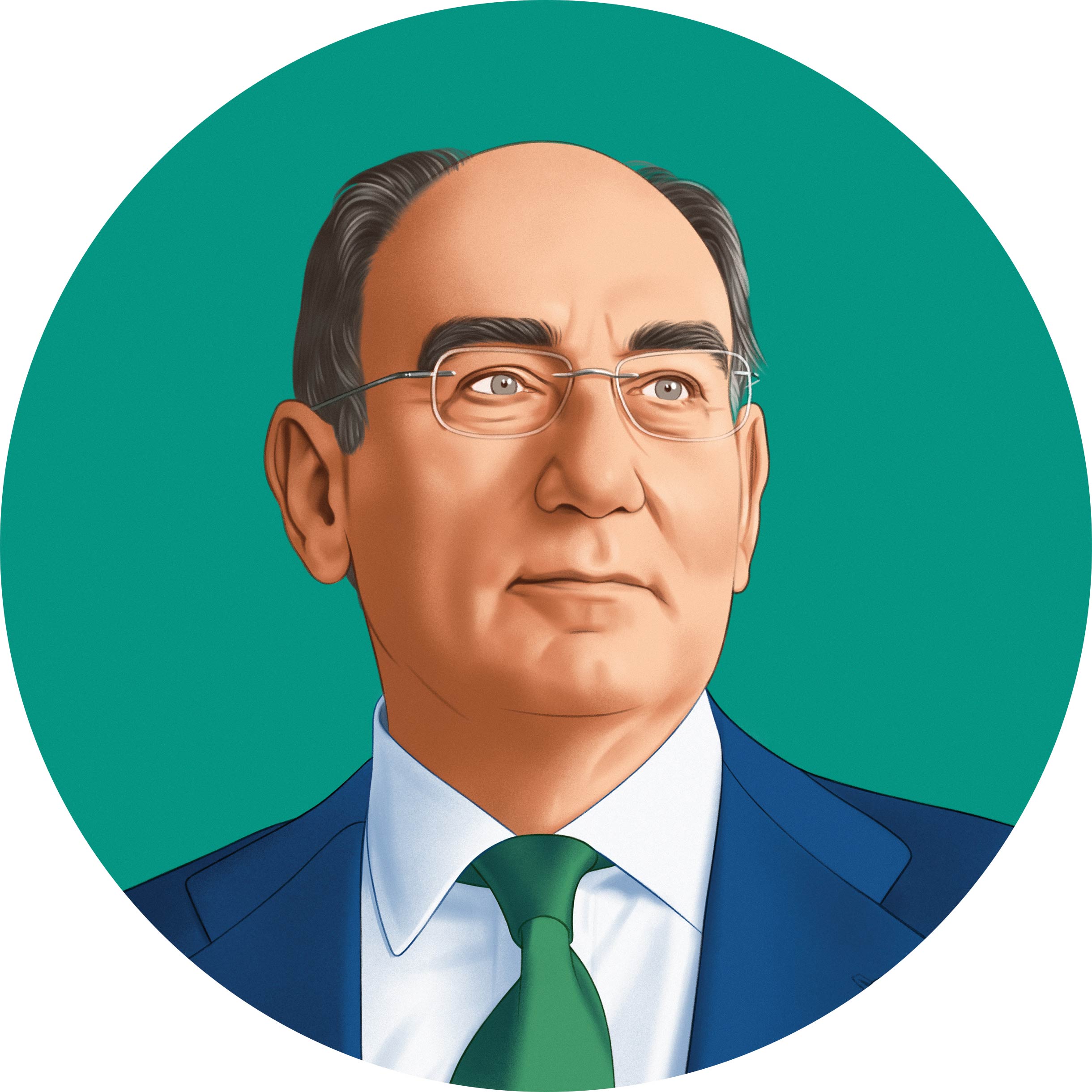
Transparent Sustainability Reporting
In 2001, when I joined Iberdrola as CEO, sustainability reporting was not a top priority for the business world and certainly not for companies in the energy sector.
Indeed, it would be another three years before the acronym ESG—standing for environmental, social, and governance goals and metrics—was coined in a 2004 report entitled “Who Cares Wins,” from the UN Global Compact, the International Finance Corporation, and the Swiss government.
In the 18 years since, the term has become something of a cliché in corporate circles, as leaders promise that their organizations will pollute less, contribute more to their communities, and operate ethically. However, as the old management adage goes, it’s only what is measured that gets managed. That is why we decided early on not only to commit to becoming the leading provider of clean energy in Europe and other markets (with operations in the United States, Mexico, Australia, and Japan, among others) but also to regularly release information on our progress toward that goal, including publishing a detailed annual environmental performance report.
In the introduction to the first edition in 2002, I made it clear that our company was on a transformative journey. At that time, fossil fuels were king, and most regulators, governments, and investors had little interest in shifting to alternatives, such as wind and solar. But we could see that renewables, supported by networks and storage, were the best way to reduce emissions and provide a more secure, self-sufficient, competitive, and climate-friendly energy solution.
I wanted to galvanize our employees, shape our corporate culture, and prove to investors and analysts that we were serious about our plans to be both sustainable and profitable.
In releasing the annual report, we exposed ourselves to an additional level of scrutiny not demanded of us by regulators or stakeholders. But another benefit of transparent and systematic reporting is that it helps us understand where problems and opportunities lie and find ways to rectify or take advantage of them.
Our commitment to “ESG+F” principles and reporting (where the F stands for finance) continued to evolve, and a few years later we created the concept of “social dividend” to reflect our commitment to creating value for all our stakeholders. Delivering a social dividend is mandated in our bylaws, and we report on it every year, just as we handle financial dividends.
And our two decades of efforts have been rewarded. We are now widely recognized as a top performer by external ESG indices, and at our 2022 annual general meeting, shareholders approved every agenda item by an average yea vote of 98% but expressed even more overwhelming support—99.9%—for our governance and sustainability management.
Today investors, regulators, and the public fully expect ESG performance to be robustly reported and closely tied to corporate strategy. It is no longer just a matter of compliance. It is about being an active participant in the societal transformation that communities are demanding from private and public organizations. Reporting is a vital tool in successful management—and it is absolutely essential in the fight against climate change.
[ Former CEO / PepsiCo ]
Indra Nooyi
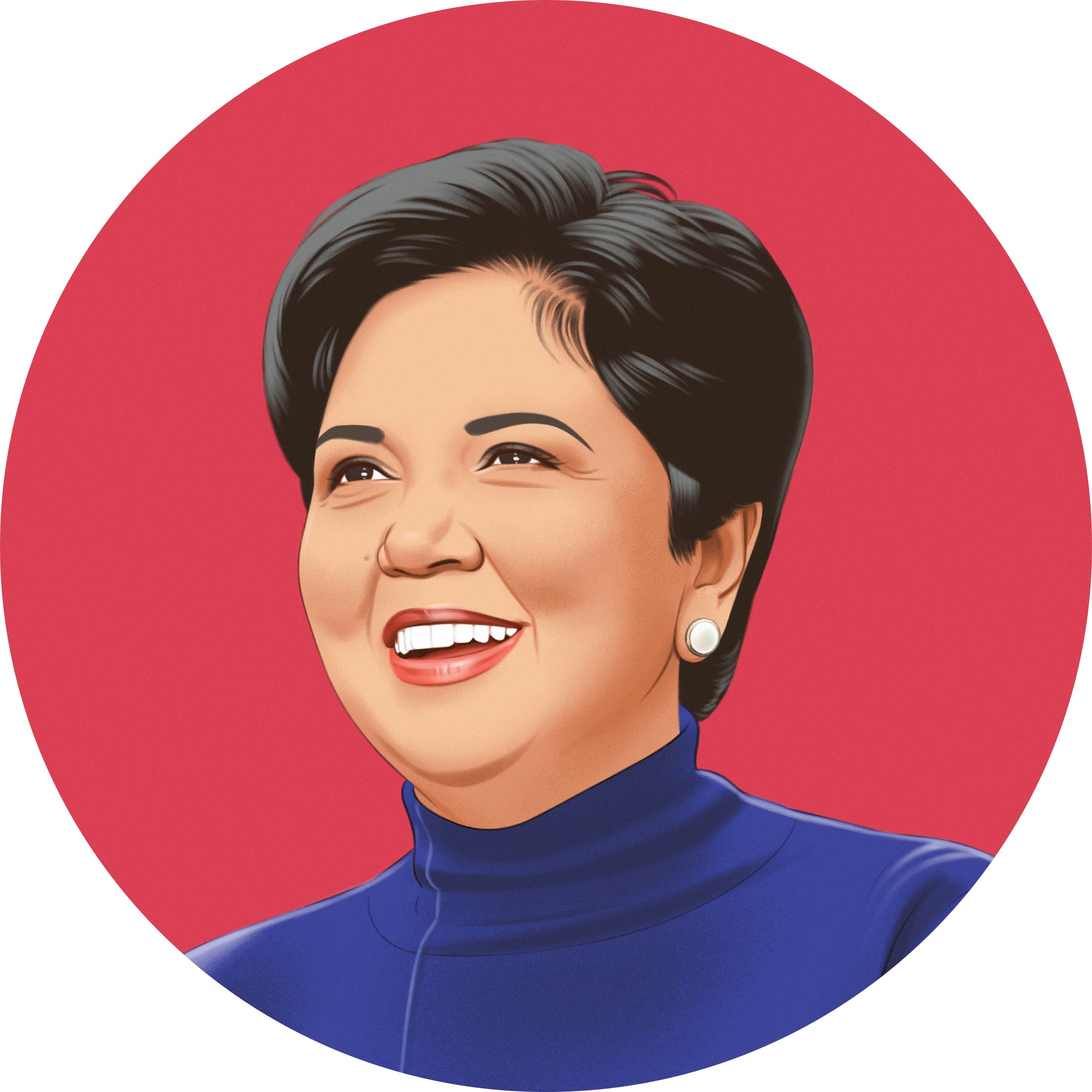
Performance with Purpose
When I was named CEO in 2006, I was determined to run PepsiCo so that it would both deliver good short-term performance and thrive in the long term, years after I was gone. The company was already in good shape, but I dreamed of creating a defining corporation of the 21st century, proud of its roots, yet global, nimble, and responsible in the shifting times.
For six months or more, I quietly read all I could about the big societal trends influencing business, the consumer sector, and food and beverage in particular. I walked the market, observing customers in action. I pored over buying data, employee feedback, and the external noise in our industry and categories. I also dug deep into the duties and responsibilities of public corporations. From all of this emerged a vision for PepsiCo that guided us for the next dozen years or so. I called it “Performance with Purpose.”
The goal was to deliver great financial returns, as we always had, with three additional clear imperatives: to nourish humanity and the communities in which we live, to replenish our environment, and to cherish our people. We would alter how PepsiCo made money by tying our business success to those objectives: adding more-nutritious products to our portfolio, reducing water usage and plastic waste, and attracting and retaining the very best talent.
My motivation was wholly to “future proof,” or de-risk, PepsiCo for the benefit of all—shareholders, employees, communities—by anticipating how the world would change in the decades to come. And it worked. In my 12 years as CEO, total shareholder return was 149%, dividends grew 10% a year, and net revenue jumped 80%. We cut the salt, fat, and sugar in soda and chips, added more-healthful brands and products, and lowered the amount of water needed to make a bottle of Pepsi by 40%. We built a magnificent R&D operation to keep innovation going. Our design studios won many awards. Our talent academy was so robust that nine senior executives left to take CEO jobs elsewhere, a bittersweet accomplishment of which I am proud.
I believe that leaders must commit to the hard work of thinking from the future back, even when things are going fine. And we now have a framework to help: the evolving templates for environmental, social, and governance (ESG) metrics that, in essence, serve to de-risk companies and markets. These criteria force discussion of hard truths for anyone with the ambition to stay relevant in the long term. If the metrics are carefully selected, ESG is not contrary to investors’ interests. Importantly, de-risking the company actually creates shareholder value.
“Performance with Purpose” wasn’t easy to implement and presented tough moments for me, including when one money manager exclaimed, “Who do you think you are? Mother Teresa?” But skepticism faded when a collective mission took hold that included both the bottom line and much beyond. This was my hope from the start.
